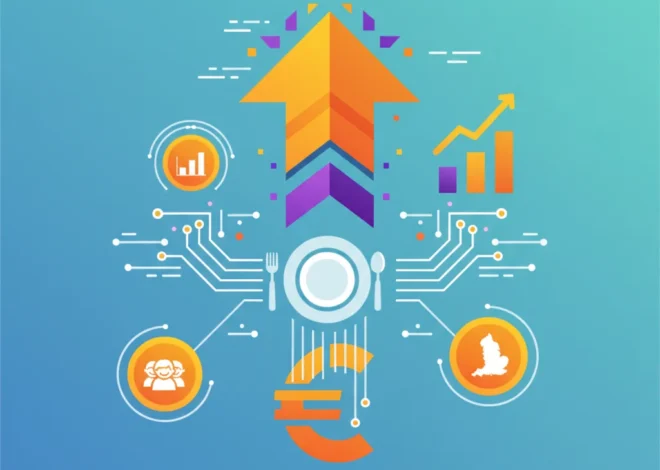
The $40 Billion COBOL Catastrophe: How Ancient Tech Fueled a National Crisis
The Unseen Crisis That Cost Billions
When the COVID-19 pandemic brought the world to a standstill, governments scrambled to deliver essential aid. In the United States, a torrent of unemployment claims flooded state systems, and a lifeline was thrown to millions of out-of-work citizens. But beneath the surface of this massive relief effort, a different kind of disaster was unfolding—a technological one. A recent study has put a staggering price tag on this failure: outdated, “rubbish” IT systems allowed fraudsters to siphon off at least $40 billion in fraudulent unemployment claims during the pandemic.
This isn’t just a story about lost money. It’s a cautionary tale about the immense cost of technological neglect. It’s the story of how decades-old software, running on creaking infrastructure, buckled under pressure, failing the very people it was meant to serve and opening the floodgates for criminals. At the heart of this crisis lies a programming language older than the moon landing: COBOL.
Meet COBOL: The Ghost in the Machine
For those in the tech world, the name COBOL might elicit a wry smile or a shudder. For the general public, it’s likely an unknown entity. COBOL (Common Business-Oriented Language) is a programming language that dates back to 1959. It was designed for business, finance, and administrative systems on mainframe computers. And it was incredibly successful. To this day, it powers core systems at major banks, insurance companies, and, critically, government agencies.
The problem? The world of technology has moved on, but these systems haven’t. They are classic examples of “technical debt”—the implied cost of rework caused by choosing an easy (or no) solution now instead of using a better approach that would take longer. For decades, it was easier to patch these COBOL systems than to replace them. The result, as the Financial Times aptly described it, was “Cobol snowballs” (source)—decades of patches and fixes layered on top of each other, creating a brittle and incomprehensible mess.
When the pandemic hit, these systems faced a challenge they were never designed for:
- Unprecedented Scale: Weekly unemployment claims surged from a few hundred thousand to over 6 million, a load these systems couldn’t handle.
- Rapid Rule Changes: Congress passed new, complex relief packages that required immediate changes to benefits calculations. Modifying 60-year-old code is a slow, perilous process.
- A Vanishing Talent Pool: The number of programmers who understand COBOL is dwindling as they retire, leading to a desperate search for specialists whenever a crisis strikes.
The systems didn’t just slow down; they broke. Payments were delayed for millions of desperate families. Worse, their primitive security and validation processes were a wide-open door for fraudsters who used sophisticated techniques to file bogus claims, costing taxpayers billions.
The True Cost: Beyond the Balance Sheet
The $40 billion figure is shocking, but the financial loss is only part of the story. The failure of these systems had profound social and security consequences.
First, it eroded public trust. For a citizen in need, a government that cannot deliver a simple payment in a time of crisis feels incompetent and distant. This frustration fuels cynicism and disengagement. Second, it exposed a critical national cybersecurity vulnerability. State-sponsored actors and international criminal rings exploited these weaknesses, turning a public health crisis into a national security issue. The very infrastructure meant to provide a safety net became a vector for economic attack.
To truly grasp the chasm between the old and the new, let’s compare the legacy systems that failed with the modern alternatives available today.
| Feature | Legacy Systems (e.g., COBOL on Mainframes) | Modern Systems (e.g., Cloud-Native, SaaS) |
|---|---|---|
| Scalability | Fixed, rigid capacity. Scaling is slow, expensive, and requires physical hardware. | Elastic and on-demand. Scales automatically to handle traffic spikes using the cloud. |
| Agility & Speed | Changes take months or years. High risk of breaking the entire system with one patch. | Rapid iteration. New features and rule changes can be deployed in days or hours via CI/CD pipelines. |
| Security | Often relies on perimeter security. Lacks modern fraud detection and identity verification. | Layered cybersecurity with real-time threat detection, often powered by AI and machine learning. |
| Talent Pool | Shrinking and aging. Expertise is rare and expensive. | Vast and growing. Built on modern programming languages and frameworks. |
| Cost Model | High capital expenditure (CapEx) for hardware and high operational costs for maintenance. | Pay-as-you-go operational expenditure (OpEx). Lower total cost of ownership. |
The Path Forward: From Technical Debt to Digital Dividend
So, how do we prevent the next $40 billion catastrophe? The solution isn’t to find more COBOL programmers. It’s to fundamentally rethink how government delivers digital services. The path forward is paved with the technologies that are already powering the private sector.
1. Embrace the Cloud and SaaS
The scalability and resilience issues that plagued state systems are solved problems in the modern tech landscape. By migrating to cloud infrastructure (like AWS, Azure, or Google Cloud), agencies can access virtually limitless computing power on demand. Furthermore, adopting a SaaS (Software-as-a-Service) model for common functions allows government to leverage best-in-class solutions built and maintained by experts, rather than trying to build everything from scratch.
2. Leverage AI and Automation for Smarter Defense
Imagine a system that could have analyzed unemployment claims in real-time, flagging suspicious patterns instantly. This is precisely what artificial intelligence and machine learning are built for. An AI-powered system could identify:
- Multiple claims filed from a single IP address.
- Claims using stolen or synthetic identities.
- Anomalous application patterns that deviate from normal human behavior.
This proactive defense, driven by intelligent automation, could have prevented a huge portion of the fraudulent payouts. Instead of playing catch-up, agencies could be a step ahead of the criminals.
Beyond the Blackout: Vodafone’s Outage and the Hidden Fragility of Modern Software
3. Foster a Culture of Innovation and Partnership
The government cannot and should not solve this alone. The private sector, especially the vibrant ecosystem of tech startups, is a wellspring of innovation. Public-private partnerships are essential. By creating streamlined procurement processes and being more open to working with smaller, more agile companies, the government can tap into cutting-edge solutions for everything from identity verification to secure payment processing. This requires a cultural shift away from massive, multi-decade projects toward more iterative, modular, and user-centric software development.
JPMorgan's B Bet on American Tech: Why Your Startup Should Be Paying Attention
The Final Word: A Lesson Paid for in Billions
The $40 billion lost to fraud is a sunk cost. It’s an infuriating, monumental waste that hurt real people and enriched criminals. But the lesson it teaches us is invaluable. It’s a stark reminder that infrastructure in the 21st century isn’t just about roads and bridges; it’s about servers, code, and data. Neglecting our digital infrastructure is as dangerous as letting a bridge crumble.
This crisis was a brutal stress test that our legacy systems failed in spectacular fashion. The challenge now is to treat this moment not as a failure to be buried, but as a mandate to rebuild. By embracing the cloud, leveraging AI, and fostering true innovation, we can build a public technology infrastructure that is resilient, secure, and worthy of the citizens it serves. The price of inaction has already been paid, and we cannot afford to pay it again.


